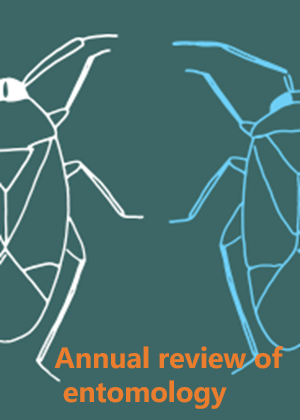螯虾的进化生物学
IF 16.7
1区 农林科学
Q1 ENTOMOLOGY
引用次数: 0
摘要
螯足类是节肢动物中一个古老、生物多样且具有重要生态意义的类群。在过去的十年中,对螯足类进化的研究经历了一次复兴,使我们对更高层次的系统发育和生物类群内部关系的理解发生了重大变化。这些概念上的进步包括在鲎、蜘蛛和蝎子等一部分螯足目中发现了多个全基因组复制事件。因此,关于螯足类进化的长期假说和教科书上的设想,如蛛形纲的单系和蛛形纲共同祖先对陆地的单一殖民,都受到了争议。在这一支系中保留古老的复制基因也为研究基因复制在螯足类宏观进化中的作用提供了肥沃的土壤。在研究这一新领域的同时,我们还及时建立了首个蛛形纲模型基因编辑协议,促进了新一代实验方法的发展。本文章由计算机程序翻译,如有差异,请以英文原文为准。
The Evolutionary Biology of Chelicerata
Chelicerata constitutes an ancient, biodiverse, and ecologically significant group of Arthropoda. The study of chelicerate evolution has undergone a renaissance in the past decade, resulting in major changes to our understanding of the higher-level phylogeny and internal relationships of living orders. Included among these conceptual advances are the discoveries of multiple whole-genome duplication events in a subset of chelicerate orders, such as horseshoe crabs, spiders, and scorpions. As a result, longstanding hypotheses and textbook scenarios of chelicerate evolution, such as the monophyly of Arachnida and a single colonization of land by the common ancestor of arachnids, have come into contention. The retention of ancient, duplicated genes across this lineage also offers fertile ground for investigating the role of gene duplication in chelicerate macroevolution. This new frontier of investigation is paralleled by the timely establishment of the first gene editing protocols for arachnid models, facilitating a new generation of experimental approaches.
求助全文
通过发布文献求助,成功后即可免费获取论文全文。
去求助
来源期刊

Annual review of entomology
生物-昆虫学
CiteScore
45.70
自引率
0.80%
发文量
46
期刊介绍:
The Annual Review of Entomology, a publication dating back to 1956, offers comprehensive reviews of significant developments in the field of entomology.The scope of coverage spans various areas, including:biochemistry and physiology, morphology and development, behavior and neuroscience, ecology, agricultural entomology and pest management, biological control, forest entomology, acarines and other arthropods, medical and veterinary entomology, pathology, vectors of plant disease, genetics, genomics, and systematics, evolution, and biogeography.
 求助内容:
求助内容: 应助结果提醒方式:
应助结果提醒方式:


